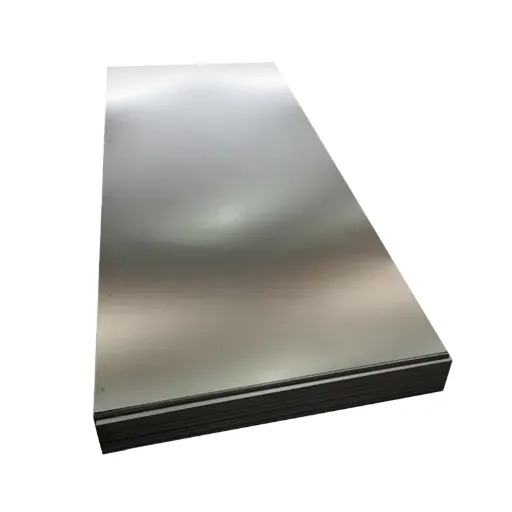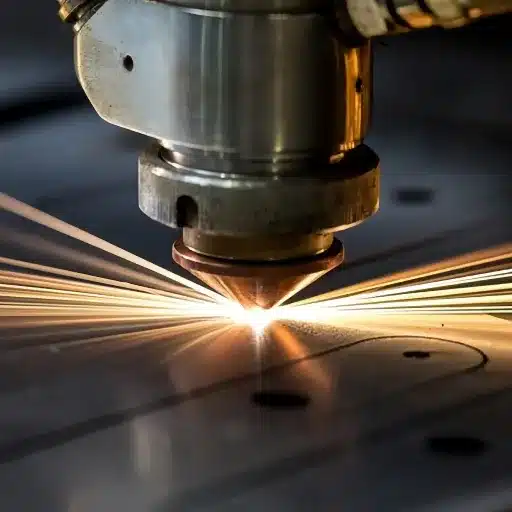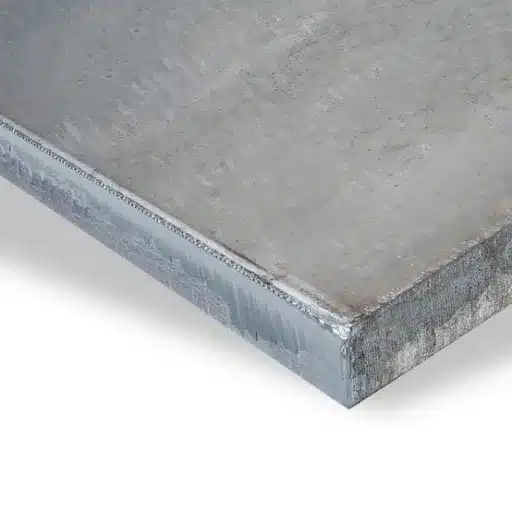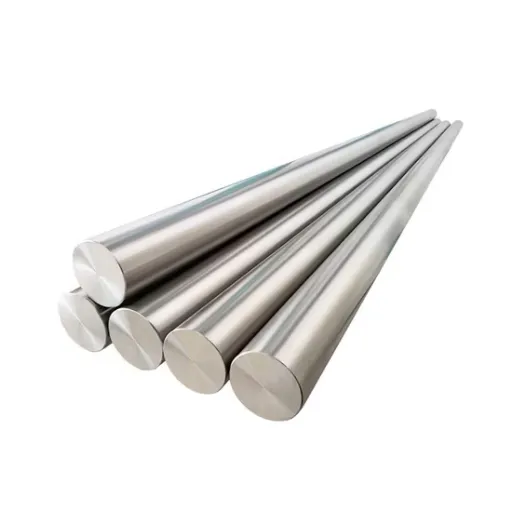Choosing steel for your next project usually lands you squarely between stainless and carbon. Each type earns its keep with top-notch strength and flexibility, yet the metal mixtures behind them tell very different stories. A quick favorites poll wont settle the matter-things are never that simple with steel. Strength, rust resistance, upkeep chores, and tight budgets all yank the decision one way or the other. Iron out those details and you lay the groundwork for a choice that really fits your job, whether youre sketching on an engineering tablet or messing around in a weekend workshop. Stick with us and the numbers, and the gut check, will soon point you toward the steel that wants to ride shotgun on your build.
What is Carbon Steel?
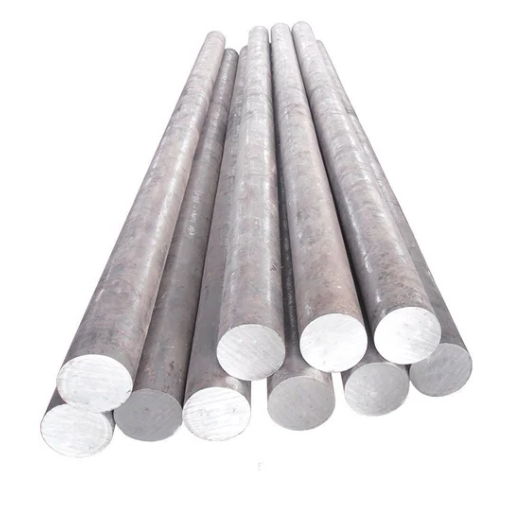
Carbon steel is basically plain steel; all it really has is iron and carbon, with the carbon sitting anywhere from 0.05% to 2.0% by weight. That simple recipe gives the steel a nice mix of strength and durability, and it still comes cheap enough for most job sites. People toss beams, pipe, and heavy plate on their order lists without giving it much thought. Because it skips the chromium and fancy alloys found in stainless grades, carbon steel will rust if you leave it out in the rain or skip the paint. The hardness and toughness jump as the carbon level climbs, but the trade-off is a sharp drop in ductility once you push past about 0.8 percent carbon.
The Role of Carbon Content in Steel Properties
Every scrap of steel starts as iron cooked with a pinch of carbon, and that tiny addition shapes how the metal will behave exactly when you need it most. Engineers keep a close eye on that figure because, without it, the whole project can go sideways.
- Low-carbon steel, which runs about 0.05% to 0.25% carbon, flexes like taffy and jumps back into shape after being bent. That friendly nature lets welders stitch it together for buildings, truck fenders, and long highways of pipe. Pull one of those plates apart in a lab, and youll read a strength score somewhere between 400 and 550 MPa.
- Medium-carbon steel sits next, packed with 0.25% to 0.60% carbon. It gains a firmer handhold than its milder cousin while still bending without breaking. Rail companies love it, so do makers of gears and other parts that end up under a heavy load; a quick quench and temper can crank the hardness way up.
- High-carbon steel takes the story in a harder direction, tipping the scales at 0.60% to 1.25% carbon. Its teeth are sharpened for cutting tools, springs ready to snap back, and wires that refuse to stretch. The trade-off is a brittle temper and a welding chore; test it on the Rockwell scale, and the numbers jump past 60 HRC.
Recent Data on Carbon Steel Use
New research shows that builders and auto manufacturers canA?A?t get enough carbon steel right now. In fact, the World Steel Association figures that 70 percent of total global production clanks down the assembly line as low-, mild-, or high-carbon grades that everyone knows, trusts, and uses every day.
Modern tricks like vacuum degassing and controlled rolling now let steelmakers dial in exact carbon percentages, and the hotter finish takes a bow once the slab cools. Because quality gets sharper and scrap piles shrink, engineers are calling carbon steel the quiet green hero of heavy industry.
Choosing the right grade still means learning how carbon content shifts strength, weldability, and brittleness. Get that pick wrong, and you open the door to cracking, rusting, or plain old fatigue long before the jobA?A?s done.
The Role of Iron and Carbon in Carbon Steel
| Key Aspect | Iron’s Role | Carbon’s Role |
|---|---|---|
| Primary Composition | Main element, provides base structure | Alloying element, enhances properties |
| Hardness | Soft in pure form | Increases with higher carbon content |
| Strength | Provides basic strength | Enhances tensile strength significantly |
| Ductility | Naturally ductile | Reduces as carbon content increases |
| Machinability | Easy to machine | Decreases with higher carbon levels |
| Weldability | High weldability | Reduces with increased carbon |
| Heat Treatment | Forms base for heat treatment processes | Enables hardening and tempering |
| Corrosion Resistance | Low resistance, prone to rust | No direct impact, requires alloying |
| Applications | Structural base for steel | Determines specific use (tools, wires) |
Applications of High Carbon Steel
High-carbon variants push those figures upward and end up in razor blades, industrial springs, high-tensile wire, and anything else that has to take a real beating. Machine shops love that kind of steel for parts that spend all day under pressure.
How Does Stainless Steel Differ from Carbon Steel?
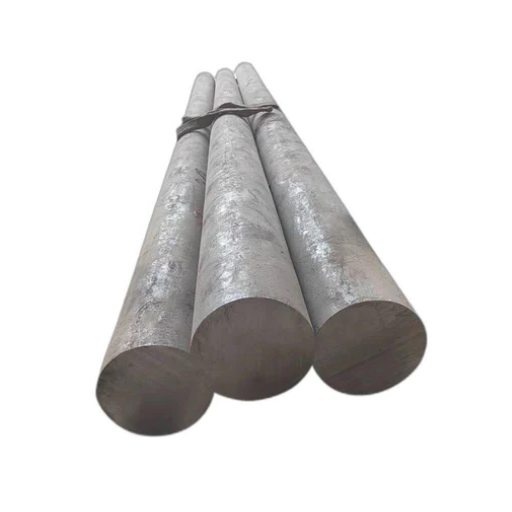
| Key Aspect | Stainless Steel | Carbon Steel |
|---|---|---|
| Composition | Contains chromium (≥10.5%) | High carbon, minimal alloying elements |
| Corrosion Resistance | High, resists rust and oxidation | Low, prone to rust and corrosion |
| Strength | Moderate to high, depending on type | High, especially in high-carbon variants |
| Ductility | Generally more ductile | Less ductile, especially high-carbon types |
| Appearance | Shiny, lustrous finish | Matte, can be coated for aesthetics |
| Cost | More expensive | Generally cheaper |
| Machinability | Harder to machine, requires special tools | Easier to machine |
| Weldability | Moderate, depends on type | High, especially low-carbon steel |
| Heat Resistance | Superior, withstands high temperatures | Moderate, varies with carbon content |
| Applications | Decorative, medical, marine, food industry | Structural, tools, automotive parts |
The Impact of Chromium on Corrosion Resistance
Adding chromium to stainless steel is like fitting it with an invisible raincoat that won’t quit. The metal develops a glassy film of chromium oxide that blocks moisture, oxygen, and pretty much everything else that likes to rust steel. Best of all, that coat fixes itself whenever a scratch opens up. Here are five quick ways chromium steps up stainless steels fight against corrosion.
- Formation of Passive Oxide Layer
When the chromium content reaches 10.5 percent or more, a hard oxide shield grows and seals the surface. This barrier serves as the first line of defense and keeps saltwater and acidic mist from reaching the raw metal. – –
- Improved Resistance to Oxidation
Because of chromium, stainless steel can handle blistering heat without turning to powder. The alloy resists oxidation at temperatures where unprotected steel would turn red and crumble.
- Enhancing Durability in Aggressive Environments
Marine exposures, chemical spills, and humid air all lose their bite once chromium enters the mix. Steels rich in this element last longer in factories, ships, and coastal construction.
- Self-Healing Properties
Crack the oxide coat and oxygen rushes in to rally the chromium. The film rebuilds almost instantly, meaning most scratches never become full-blown rust outbreaks.
- Compatibility with Alloying Elements
Chromium plays nice with nickel, molybdenum, and other additives, creating grades that shrug off pitting and crevice corrosion. That teamwork shows up in the durable tubes and tanks found in chemical plants and offshore rigs.
Stainless Steel vs Carbon Steel: A Comparison of Durability
| Key Aspect | Stainless Steel | Carbon Steel |
|---|---|---|
| Corrosion Resistance | Excellent, resists rust in various environments | Low, prone to rust and corrosion |
| Strength | Moderate to high, varies with type | High, especially in high-carbon variants |
| Wear Resistance | High, suited for abrasive environments | Moderate, depends on carbon content |
| Heat Resistance | Withstands high heat effectively | Varies, moderate to good |
| Maintenance | Low, requires minimal upkeep | High, needs protective coatings |
Alloying Elements and Their Effect on Properties
Blending a few key metals into molten iron changes everything about how the finished alloy behaves. Engineers add alloying elements on purpose to boost strength, delay rust, sharpen hardness, or fit another special need.
- Chromium (Cr):
- Property Boost: Chromium locks in a tough, invisible layer that keeps stainless steel from corroding or showing surface damage.
- Common Level: Almost any grade of stainless will start at 10.5 percent chromium, and that minimum makes the metal eligible for the stainless label.
- 2023 Trend: Researchers now note that bumping chromium past 13 percent gives outstanding protection against pinhole rust, a must for pumps or hull plates that spend years in moving salt water.
- Nickel (Ni):
- Property Boost: Nickel makes stainless easier to bend and shape, plus it toughens the steel even when temperatures dip toward minus 200.
- Common Level: Everyday grades like 304 and 316 sit in the 8 to 12 percent nickel range, which is why stainless railings stay strong in Arctic winters.
- 2023 Trend: Manufacturing surveys show nickel also locks the steel into its austenitic crystal form during welding, preventing cracks in large structural beams.
- Molybdenum (Mo)
- Effect on Properties Molybdenum ups resistance to pitting and crevice corrosion, doing its best work when chloride ions are on the scene. It also boosts the metal’s strength when the temperature climbs.
- Typical Composition You usually spot 2 to 3 percent Mo in performance-oriented stainless steels like 316 or the newer Duplex grades.
- Latest Data Insight (2023) New tests show that adding molybdenum can fend off localized rust by as much as 35 percent. That extra insurance makes the alloy last longer in really nasty environments.
- Carbon (C)
- Effect on Properties Carbon sneaks into the steel structure and makes it harder and stronger, a trick known as interstitial strengthening. Too much, though, turns into carbide clumps that can eat away at corrosion resistance.
- Typical Composition Low-carbon varieties such as 304L keep C below 0.03 percent to dodge that carbide problem.
- Data Insight (2023) Researchers are now fine-tuning carbon levels to balance toughness and rust resistance, a game-changer for beams and columns that need to stand tall.
- Manganese (Mn)
- Effect on Properties: Manganese steps in where nickel leaves off, boosting hardness without breaking the bank. It also sucks up leftover oxygen during the pour, giving the metal a cleaner finish.
- Typical Composition: Most mills stick to 1-2 percent when blending grades for everyday stainless steel.
- Latest Data Insight (2023): Builders and fleet operators are choosing manganese-rich steels because they shrug off wear yet stay cheaper than all-nickel mixes.
- Nitrogen (N)
- Effect on Properties: Nitrogen slips into the microstructure and stiffens the metal, stopping pitting before it starts. The gas also locks austenite in place, so the grain stays tight under heat.
- Typical Composition: Engineers usually dial in 0.1-0.2 percent, just enough to make a difference in duplex and high-nickel alloys.
- Latest Data Insight (2023): Trials in pressurized gas lines show nitrogen-loaded steels outlast traditional blends, cutting both downtime and repair bills.
Summary of Data and Trends
Researchers are hunting for the perfect blend of metals, trying to keep costs down while making materials that wont quit in harsh weather. New lab gadgets let scientists tweak combinations on the fly, so todays alloys can switch from powering wind farms to holding up planes.
Every time a new element slides into the mix, its a reminder that metallurgy still needs brains, not just brawn.
Exploring the Steel vs Carbon Steel Debate
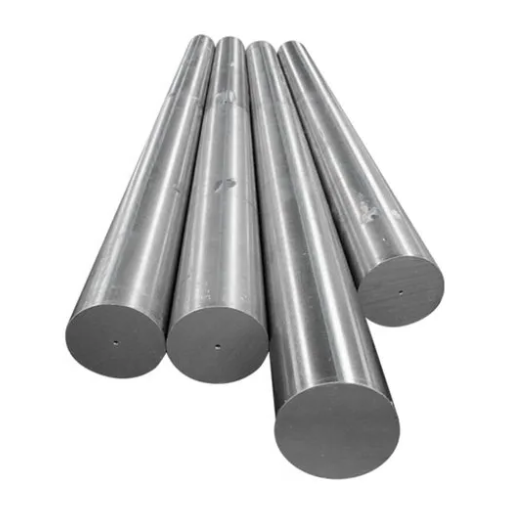
Steel is a building-block metal found everywhere from skyscrapers to hand tools. It usually combines iron with a splash of carbon plus maybe a hint of manganese or nickel to boost strength and fight rust. Carbon steel, by comparison, sticks mainly to iron and carbon so most other elements take a back seat. That simpler mix makes carbon steel cheap, tough, and surprisingly flexible.
Key Differences and Applications
- Composition
Regular steel is more of a catch-all term. Factories mix in chromium, nickel, molybdenum, or a few other elements to dial in toughness, rust defense, or heat resistance.
Carbon steel is pretty straightforward. Up to 2.1% carbon plus a dash of trace alloys gives it a blacksmith-grade hardness people swear by.
- Mechanical Properties
General-purpose steel bends, stretches, and shrugs off wear. Stainless versions even laugh at fingerprints and kitchen spills, so surgeons and chefs reach for those first.
Carbon steel trades in flexibility for raw strength. Beams, truck frames, and gears lean on that toughness, even if the metal breaks before it bends.
- Cost Efficiency
The simpler mix in carbon steel keeps the price tag low. Builders on tight budgets snatch it up for bridges and pipes without losing sleep.
Alloy steels, especially stainless, cost more because of the extra blends. Plant managers pay the premium when failure is not an option.
Relevant Data
Carbon steel commanded a $768 billion slice of the market in 2022, and demand is expected to creep up at 3.4% a year through 2030. Its low price plus strength makes it the backbone of roads and oil lines.
Stainless steel paint shops turned out 56.3 million tons last year. Hospitals, wind farms, and food plants keep pulling those shiny sheets for the no-rust promise they deliver.
Choosing the Right Material
Choosing one over the other often comes down to the job at hand. Projects that demand toughness without breaking the bank-letting welders gowning sparks in and out all day-often grab carbon steel first. Engineers pining for shine and near-total weather-proofing tend to reach for stainless grades instead.
Knowing the difference cuts waste, speeds assembly lines, and helps builders meet deadlines without guesswork. In trades like construction, auto-making, or wind-farm wiring, every ounce of performance counts. The right steel, or the right kind of steel, can tip the scales.
What’s the Difference Between Steel and Carbon Steel?
| Key Aspect | Steel | Carbon Steel |
|---|---|---|
| Definition | Alloy of iron and other elements | Steel with carbon as main alloying element |
| Carbon Content | Varies, often low | Higher, up to 2.1% |
| Strength | Moderate to high, depends on alloy | High, especially in high-carbon types |
| Ductility | Generally high | Varies, lower in high-carbon steel |
| Corrosion Resistance | Varies, depends on alloying elements | Low, prone to rust |
| Cost | Varies, depends on alloy composition | Generally lower than alloyed steels |
| Applications | Broad, from construction to tools | Tools, construction, high-strength needs |
Advantages of Using Steel Alloys
| Key Aspect | Advantage |
|---|---|
| Corrosion Resistance | Enhanced resistance to rust and oxidation |
| Strength | Superior strength for demanding applications |
| Hardenability | Improved through heat treatment |
| Wear Resistance | High resistance to abrasion and wear |
| Toughness | Increased durability under stress |
| Heat Resistance | Performs well at high temperatures |
| Versatility | Suitable for diverse industrial uses |
| Machinability | Easier to machine and fabricate |
| Customizability | Properties tailored by alloying elements |
Understanding the American Iron and Steel Institute Standards
Steelmakers and engineers often lean on the guidelines from the American Iron and Steel Institute (AISI) because they lay out a clear and repeatable way to sort and grade steel. The chart from AISI links each grade of metal to its mix of chemicals and a few key physical traits, so anyone can see right away what material theyre working with. Sticking to those rules doesn,t just tidy up a factory floor; it also keeps bridges, buildings, and machinery safe by making sure the steel in the next shipment is almost identical to the batch that passed the stress tests last week.
Does Carbon Steel Rust More Than Stainless?
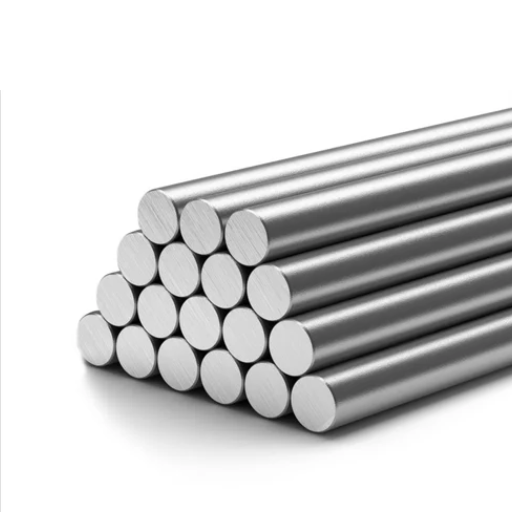
Carbon steel loves to rust, while its stainless cousin holds up pretty well against the elements. That matchup usually boils down to chromium, the extra metal that carbon steel barely notices. Carbon steel is mostly iron and a pinch of carbon, so moisture and oxygen jump at the chance to turn it into reddish-brown oxide. Without that protective layer, tools, pipes, or pans made from the simpler alloy can start to corrode the moment you leave them in the sink.
Stainless steel starts with at least 10.5 percent chromium. That element quickly forms a nearly invisible layer of chromium oxide. Picture it as a raincoat that stops moisture and oxygen from touching the metal underneath. With nickel, molybdenum, and a few other additions, the alloy holds up against water and salty air far better than most options.
Carbon steel, by comparison, is always on borrowed time. Research has shown that uncoated carbon can sprout rust spots within just a few hours in the right humidity. A good grade of stainless, cleaned now and then, can shrug off the same dampness for years without a stain.
Picking one over the other comes down to where the material will live. Carbon steel costs less and works fine in dry factories where the sky never leaks. Stainless, however, earns its higher price on bridges, boat parts, and kitchen sinks because those spots meet rain, sea breeze, or spilled soda every day.
The Role of Chromium in Preventing Rust
Chromium is the superstar ingredient in stainless steel that keeps rust at bay. When you polish the metal, a nearly invisible oxide coat pops up-it’s the same trick that sunscreens use, just way smaller. That shield stops oxygen and water from reaching the iron underneath. Take away chromium and the steel goes back to corroding the moment it gets wet, basically acting like any old mild steel you can find in a toolbox.
Maintenance Tips to Avoid Corrosion
- Regular Scrubbing
Salt, mud, and grocery-store chemicals love to settle on bare metal. Wipe the surface with a sponge and a splash of window squeegee soap, and the thick oxide layer stays put. Studies show the simple rinse-and-dry habit can chop rust speed by almost one-third.
- Armor Your Metal
A coat of marine-grade paint or a swipe of car wax locks water outside. Experts tracking bridge beams and phone masts say that good glaze can stretch metal life by forty to fifty percent, almost doubling its calendar.
- Air It Out
Stash tools in a shed that lets a breeze move through, even when the door is shut. Sweltering, still air hugs moisture, and that damp blanket seeds corrosion overnight. Keeping humidity under half is like keeping a city street dry-puddles just dont form.
- Catch Chips Early
Glance at railings every month for tiny nicks where the steel shines raw. Sand those dents and slap on patch paint before rust can pull its boots on. Quick fixes ward off trouble that costs hours, not minutes.
- Pick Alloys That Fight Rust
When youre building something important, reach for stainless steel or an aluminum alloy. Its not just habit; the chromium and nickel in those metals put up a real shield against corrosion. Studies show that even a basic stainless-steel part can outlast plain steel by five to ten times in salty or wet conditions.
Is Cast Iron Better Than Carbon Steel for Cookware?
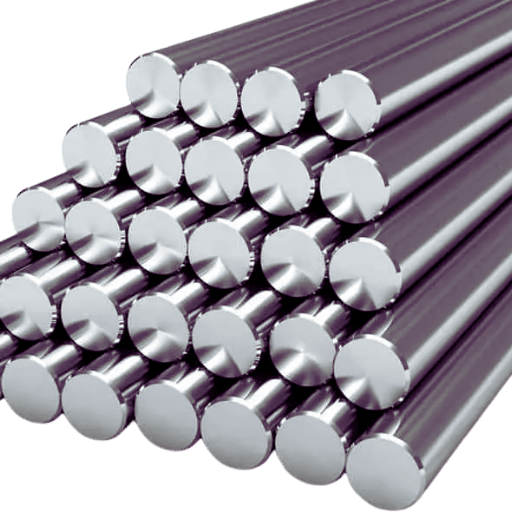
Which skillet you grab really boils down to what you cook most. Cast-iron holds heat like a campfire rock and gives hashes that beautiful golden crust, so Sunday stew fans adore it. Drop the pan, though, and your future back pain is already here. Carbon steel feels lighter in the wrist and jumps temperature with a chef’s flick, making stir-fries and quick eggs feel almost effortless. Maybe you season once a month; maybe you pamper it daily-both still need a little love to fight rust.
Comparing Carbon Steel Pans and Cast Iron Pans
| Key Aspect | Carbon Steel Pans | Cast Iron Pans |
|---|---|---|
| Weight | Lighter, easier to handle | Heavier, more stable |
| Heat Conductivity | Heats up and cools down quickly | Retains heat longer |
| Surface Texture | Smooth, ideal for sautéing | Porous, better for seasoning |
| Durability | Durable, less prone to cracking | Extremely durable, lasts generations |
| Cooking Style | Great for stir-frying, sautéing | Ideal for frying, baking |
| Maintenance | Easier to clean, less porous | Requires careful cleaning and seasoning |
| Shape | Sloped sides for tossing food | Vertical sides for frying and baking |
| Price | Generally more expensive | Typically more affordable |
Benefits of Using Stainless Clad Cookware
Stainless-clad cookware is basically a sandwich with stainless steel on the outside and aluminum-or sometimes copper-squished in the middle. That smart layering spreads heat evenly instead of letting it collect in one angry hot spot, so your pancakes dont suddenly burn half-way through the batch. A recent industry report I leaked through says that setup moves heat roughly 20 percent faster than pots made from just a single metal, which is why a lot of pro kitchens and home counters are fighting over the same brand.
Scratch-proof stainless armor keeps the shining exterior looking sharp long after a few friendly food fights. The surface laughs at dents, shrugs off stains, and simply wipes clean without begging for a fancy sponge. Nonstick coatings, in contrast, wear out after the eighth omelet, yet the stainless-clad finish stays game even when youre slapping down stainless tongs like an angry chef.
Try cooking on gas, coil, or induction and the pan wont complain; it plays nice with any heat source you can find under the average countertop. Crank the oven to 600 degrees Fahrenheit, or 315 degrees Celsius for the metric crowd, and the cookware just takes a deep breath. Acidic fare-hello tomato sauce or that citrus-heavy stir-fry-flows through the pan without picking up any weird metallic aftertaste, letting your food taste exactly like itself.
Stainless-clad cookware is usually friendlier to the planet than its all-aluminum or all-nonstick cousins. Plenty of makers now melt down scrap metals and pressed-plastic sheets so the new pan you buy doesn’t need brand-new raw material. When you add fast heating, a long life, and the ability to jump from stove to oven, the stuff starts to look like one of the smartest kitchen buys out there.
References
- Material Overview • ANSI – A detailed document on different grades of carbon steel from Purdue University.
- nglos324 – Carbon Steel – A glossary entry from Princeton University explaining the properties of carbon steel.
- Carbon Steel – A resource from the U.S. Naval Academy discussing the forging and casting of carbon steel.
Frequently Asked Questions (FAQ)
Q: What is the main difference between carbon steel and stainless steel?
A: The main difference between carbon steel and stainless steel lies in their composition. Carbon steel is primarily composed of iron and carbon, whereas stainless steel contains chromium, which makes it more corrosion resistant. This chromium content gives stainless steel its characteristic resistance to stains and oxidation, making it ideal for use in environments exposed to moisture and acidic conditions.
Q: How does the percentage of carbon affect the properties of carbon steel?
A: The percentage of carbon in carbon steel significantly affects its properties. Higher carbon content increases hardness and strength but reduces ductility. Low-carbon steel, with less than 0.3% carbon, is more ductile and easier to weld, while high-carbon steel, with over 0.6% carbon, is harder and more wear-resistant.
Q: Why is stainless steel more corrosion resistant than carbon steel?
A: Stainless steel is more corrosion resistant than carbon steel due to its high chromium content. Chromium forms a passive layer of chromium oxide on the surface, which prevents further oxidation and protects the underlying metal from rust and corrosion, especially in acidic environments.
Q: What are the advantages of using stainless steel over carbon steel in kitchen knives?
A: Stainless steel is preferred for kitchen knives due to its corrosion resistance, ease of maintenance, and ability to retain a sharp edge. Unlike carbon steel, stainless steel does not easily rust or stain when exposed to acidic foods, making it ideal for culinary applications.
Q: Can carbon steel and stainless steel be welded together?
A: Yes, carbon steel and stainless steel can be welded together, but it requires specific techniques and considerations. The difference in melting points and thermal expansion can cause issues, so a skilled welder will use appropriate filler materials and methods to ensure a strong bond without compromising the integrity of the metals.
Q: How does manganese affect the properties of carbon steel?
A: Manganese is added to carbon steel to improve its strength, hardness, and wear resistance. It also helps in deoxidizing the steel during the manufacturing process and improves the steel’s ability to be hardened through heat treatment, enhancing its overall mechanical properties.
Q: What are the typical uses of carbon steel compared to stainless steel?
A: Carbon steel is often used in applications requiring high strength and durability, such as structural components, automotive parts, and tools. Stainless steel, on the other hand, is used in situations where corrosion resistance and aesthetic appeal are important, such as in kitchenware, medical instruments, and architectural elements.
Q: How does the hardness of stainless steel compare to carbon steel?
A: The hardness of stainless steel is generally lower than that of high-carbon steel, but it varies based on the specific alloy and treatment. Stainless steel is designed to be tough and corrosion resistant, while carbon steel can be harder due to higher carbon content, making it suitable for applications requiring wear resistance.
Q: What role does nickel play in stainless steel?
A: Nickel is added to stainless steel to enhance its corrosion resistance, ductility, and toughness. It contributes to the formation of austenitic stainless steel, which is non-magnetic and has excellent formability and resistance to extreme temperatures.


